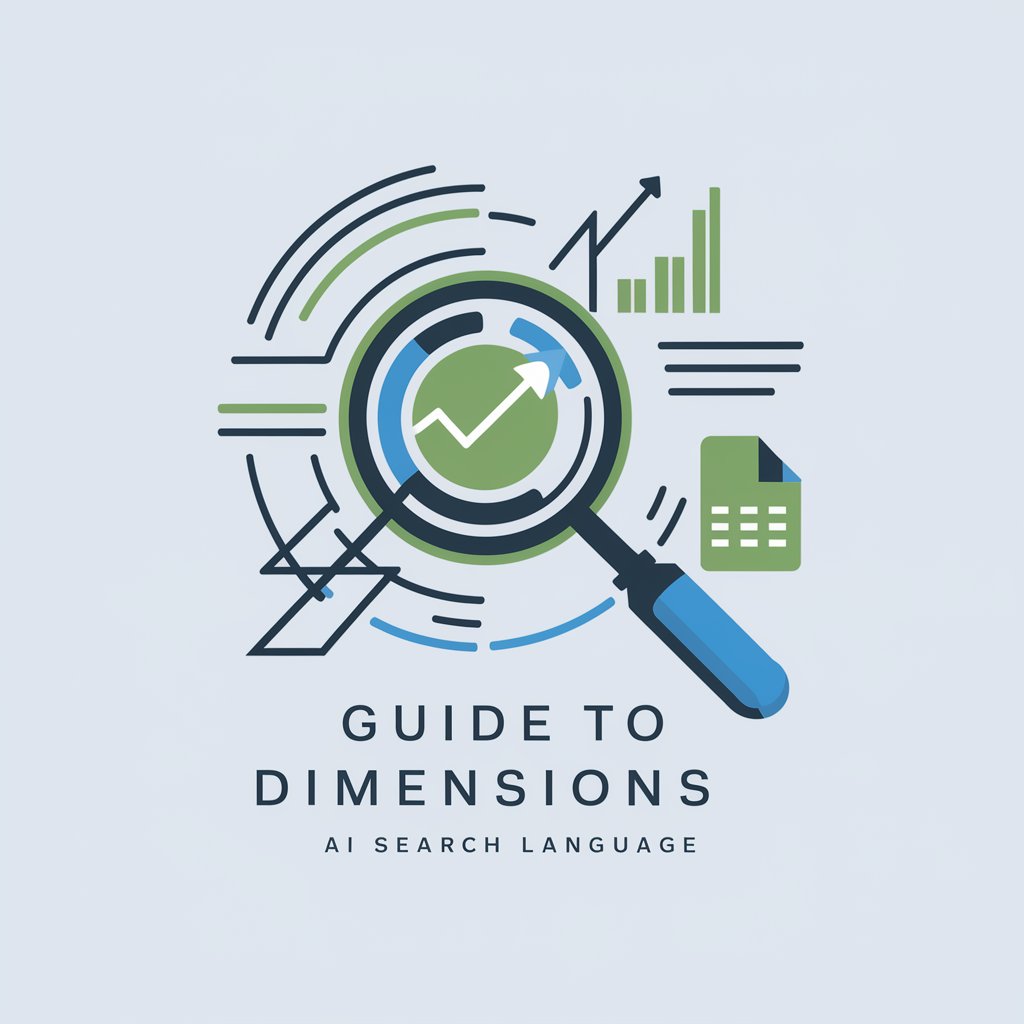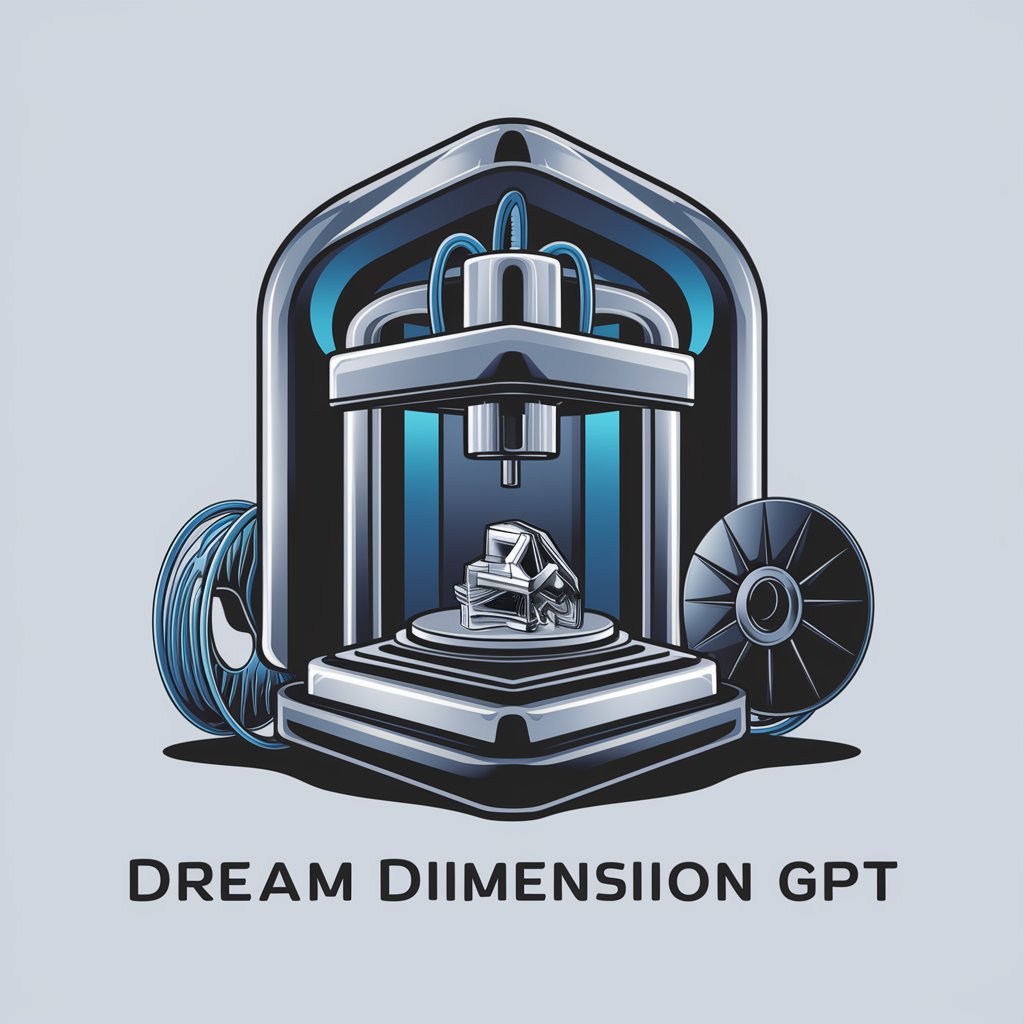Guide to Dimensions AI Search Language - DSL Query Conversion Tool

Welcome! Ready to explore research data with Dimensions DSL?
Transforming Queries into Insights with AI
Generate a DSL query to find...
How can I analyze data on...
What is the best way to compare...
Help me construct a query to identify...
Get Embed Code
Understanding the Guide to Dimensions AI Search Language
The Guide to Dimensions AI Search Language (DSL) is designed as an educational and practical tool that translates complex research queries into DSL code, which can be integrated with the Google Sheets API for data retrieval from the Dimensions database. Dimensions is a comprehensive database that compiles research information across several dimensions, including publications, grants, patents, and clinical trials. The primary purpose of this tool is to assist users in formulating precise DSL queries that facilitate data extraction for various analyses within Google Sheets. For example, a user interested in the trends of artificial intelligence research might use DSL to query publication counts per year, which can then be analyzed to spot trends and growth areas in this field. Powered by ChatGPT-4o。

Core Functions of the Guide to Dimensions AI Search Language
DSL Code Generation
Example
A user wants to find out how many research papers on 'neural networks' have been published each year since 2010. The tool would generate the DSL code: `search publications for 'neural networks' where year >= 2010 return year, count`.
Scenario
This function is particularly useful in academic research where trends over time are crucial for understanding the evolution of a specific scientific field.
Analytical Guidance
Example
Once data is retrieved via DSL, the tool suggests using Google Sheets functions like `PIVOT TABLES` or `CHARTS` to visualize the data, such as showing the number of publications over the years in a bar chart.
Scenario
This is beneficial for researchers who need to present their findings visually to convey the impact or trends clearly to an audience that may not be specialized in their field.
Educational Support
Example
For beginners, the tool explains the structure and syntax of DSL, breaking down each component of the DSL code `search grants for 'sustainable energy' return researchers` to illustrate how each segment contributes to the query.
Scenario
Ideal for students or new researchers who are starting to explore complex databases and need guidance on structuring queries effectively.
Who Benefits from Using the Guide to Dimensions AI Search Language?
Academic Researchers
Academic researchers utilize the tool to extract specific data from Dimensions to support their studies, such as tracking publication outputs, grant funding trends, or patent registrations in their field.
Data Analysts
Data analysts in research institutions use the tool to perform complex data extraction and subsequent analysis, helping them to generate insights from large datasets that influence research directions and policy making.
Educational Institutions
Teachers and educators can use the tool to introduce students to real-world data analysis, helping them understand data handling, query formulation, and the application of research data in various academic disciplines.

How to Use Guide to Dimensions AI Search Language
Initial Access
Visit yeschat.ai to start using the tool for free, no account creation or ChatGPT Plus subscription necessary.
Explore the Interface
Familiarize yourself with the user interface, particularly where to input your search queries and where the results will be displayed.
Learn DSL Syntax
Review the documentation provided within the tool to understand the Dimensions AI Search Language (DSL) syntax for accurate query formulation.
Enter Queries
Start by entering a basic search query using DSL to fetch data. Use the example queries as a guide for your first searches.
Analyze Results
Analyze the results in Google Sheets to perform advanced data analysis, utilizing the data to identify trends, compare outputs, and more.
Try other advanced and practical GPTs
AI Dimension Navigator
Empower Your Intellect with AI

The Dream Dimension GPT
Power Your Prints with AI Expertise

企業調査GPT
AI-powered business insights for growth

【就活】企業研究GPT
AI-powered corporate research for job seekers.

AIツール紹介営業マン
Empowering Businesses with AI

Salesforceの営業アシスタント
AI-Powered Sales Enhancement

Dimension Wizard
Bringing 2D Images to Life

Dimension Artist
Crafting Precise Imagery with AI

Five Dimension Explorer
Explore Topics in Full Dimensionality

Dimension DFS Guide
Simplifying DFS with AI-powered guidance

Dimension Asset Manager Guide
Optimizing investment portfolios with AI

Data Driven Persuader
Empowering Words with AI-driven Data

Frequently Asked Questions About Guide to Dimensions AI Search Language
What is DSL in the context of the Guide to Dimensions AI Search Language?
DSL (Dimensions AI Search Language) is a structured query language designed to interact with the Dimensions database via Google Sheets, allowing users to perform complex searches on scholarly data.
Can I use the Guide to Dimensions AI Search Language for qualitative data analysis?
Yes, the tool is well-suited for qualitative analysis by helping users to extract thematic and descriptive data from a vast scholarly database, which can then be analyzed for qualitative insights.
Is it necessary to have programming knowledge to use this tool?
No, programming knowledge is not required. The tool is designed to convert natural language queries into DSL, making it accessible for non-programmers.
How can this tool help with literature reviews?
It streamlines the literature review process by enabling precise searches on specific topics, authors, or publications, and organizes the results for easy analysis and review in Google Sheets.
What types of analytics can I perform with the data retrieved using this tool?
Users can perform citation analysis, trend analysis, comparative analysis of research outputs, and more, utilizing Google Sheets functions like pivot tables and charts to visualize data.
